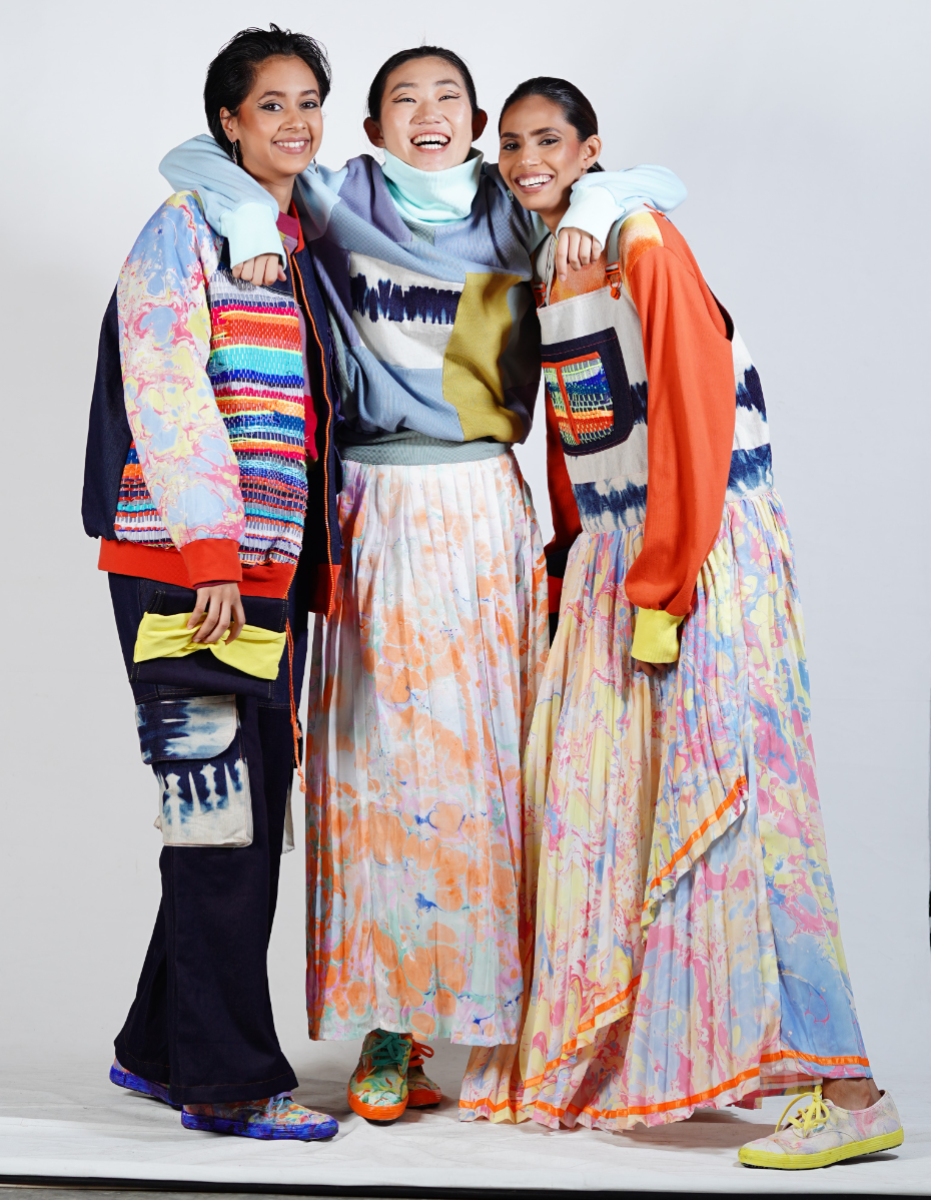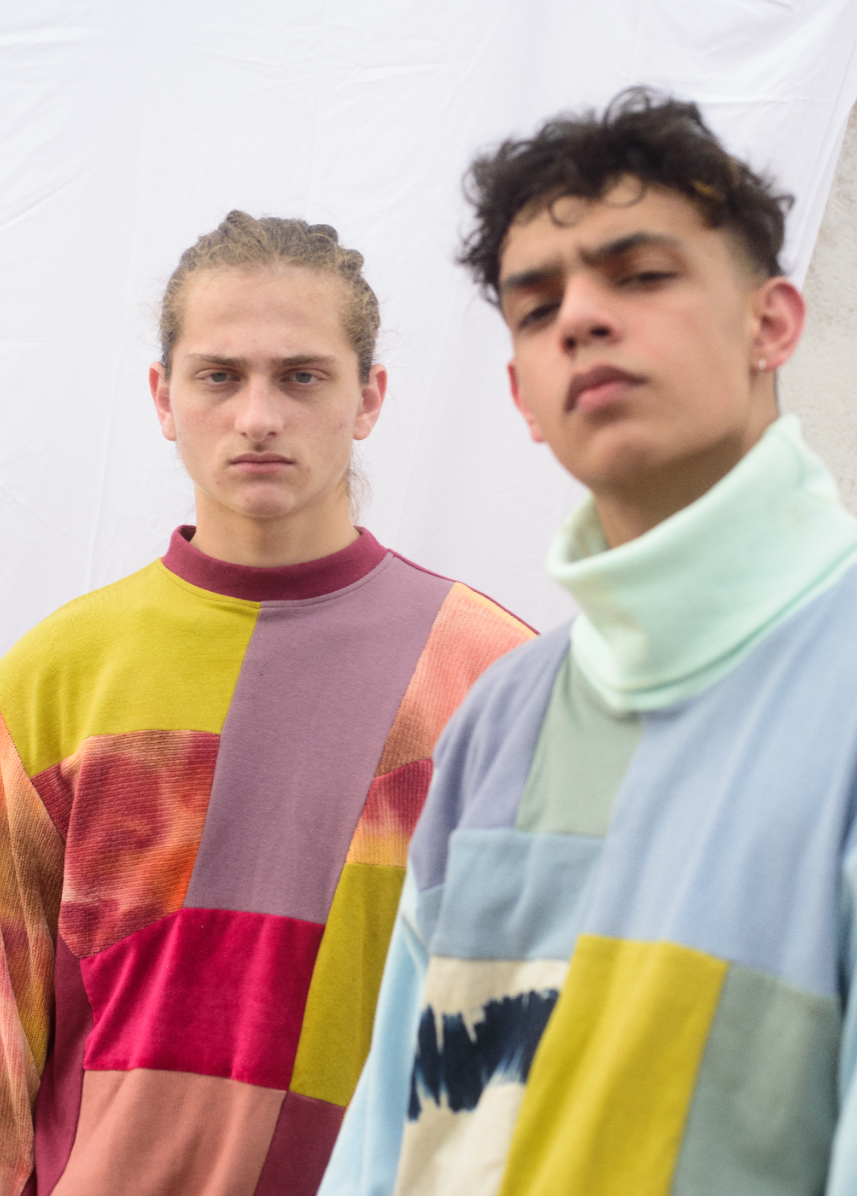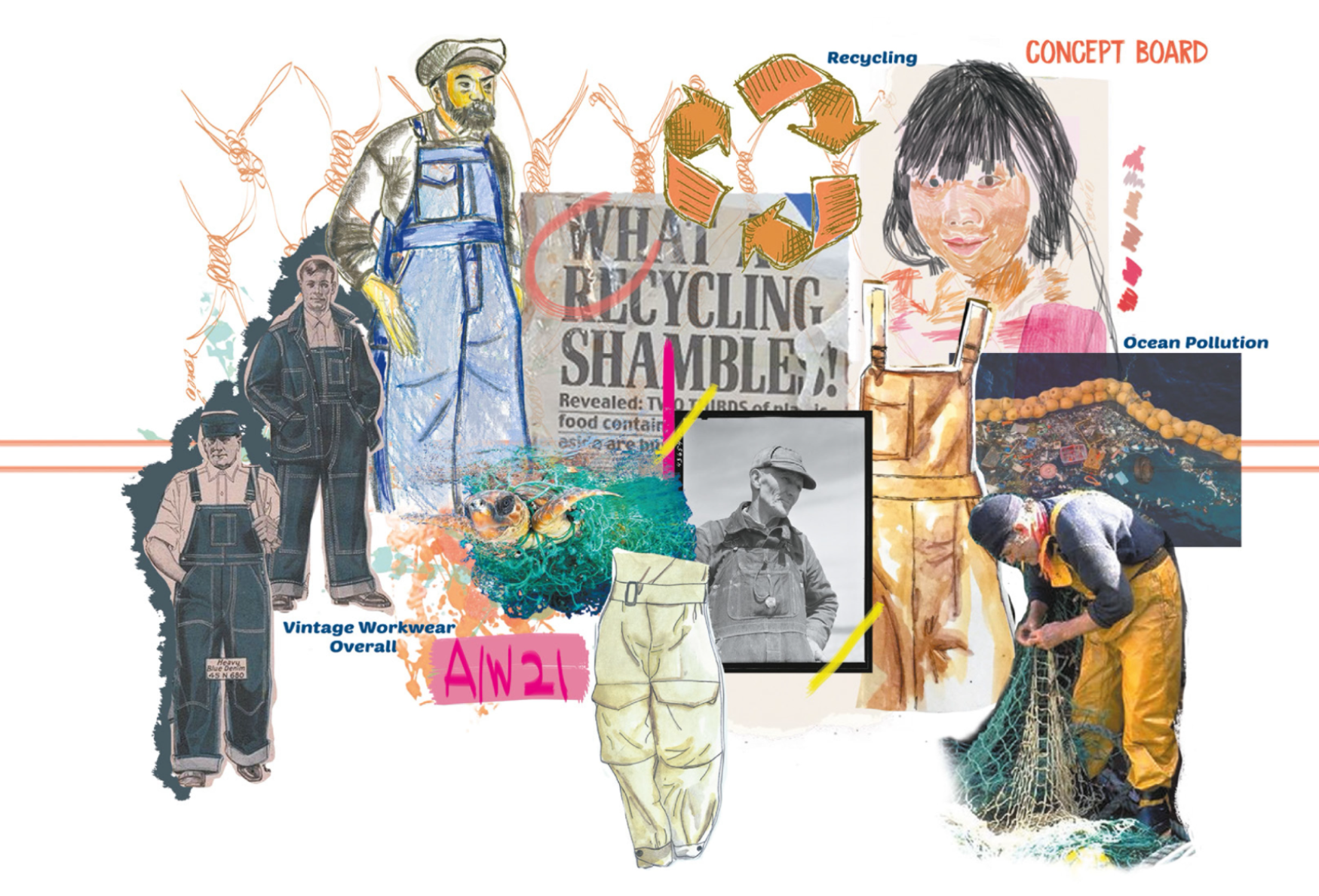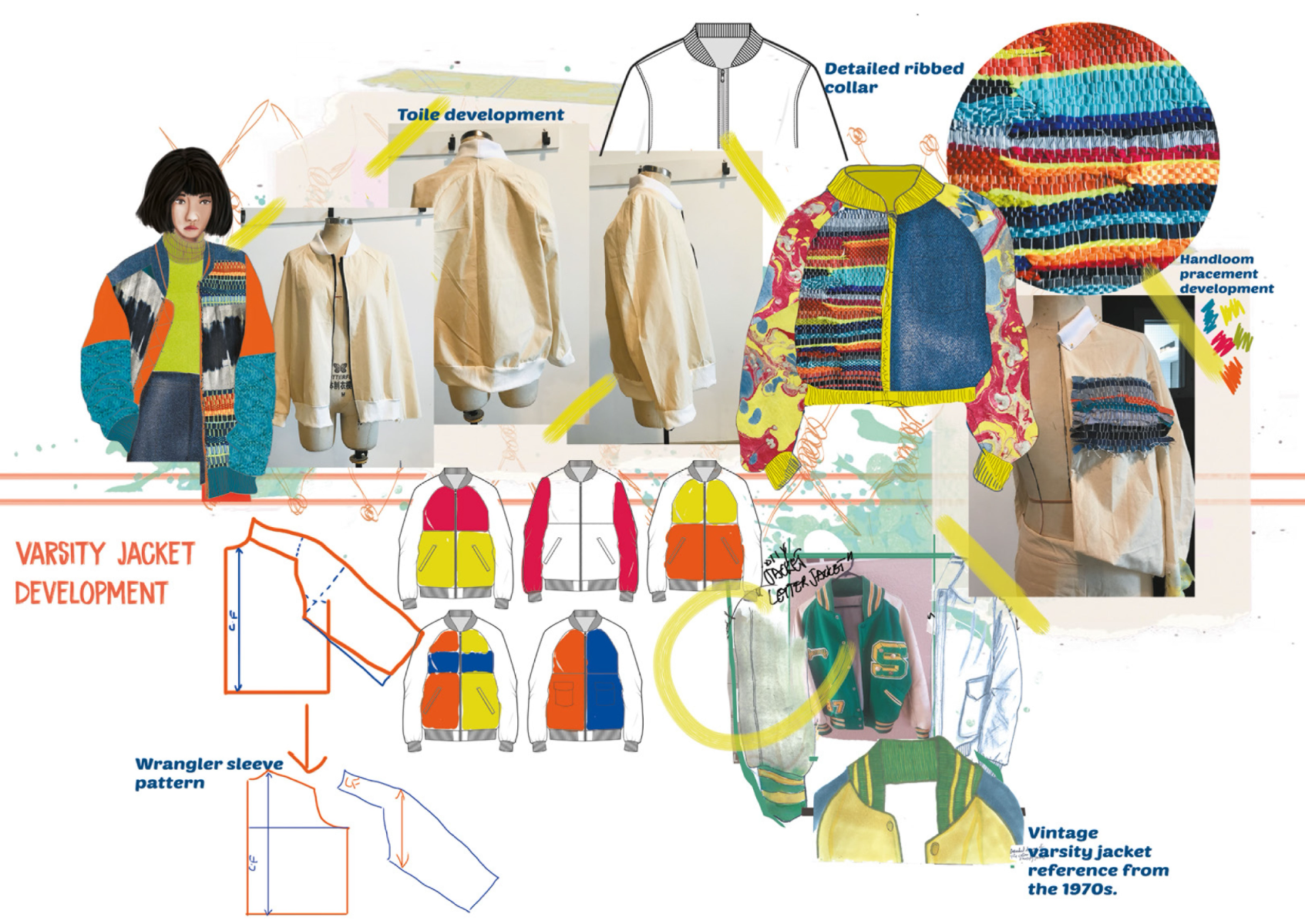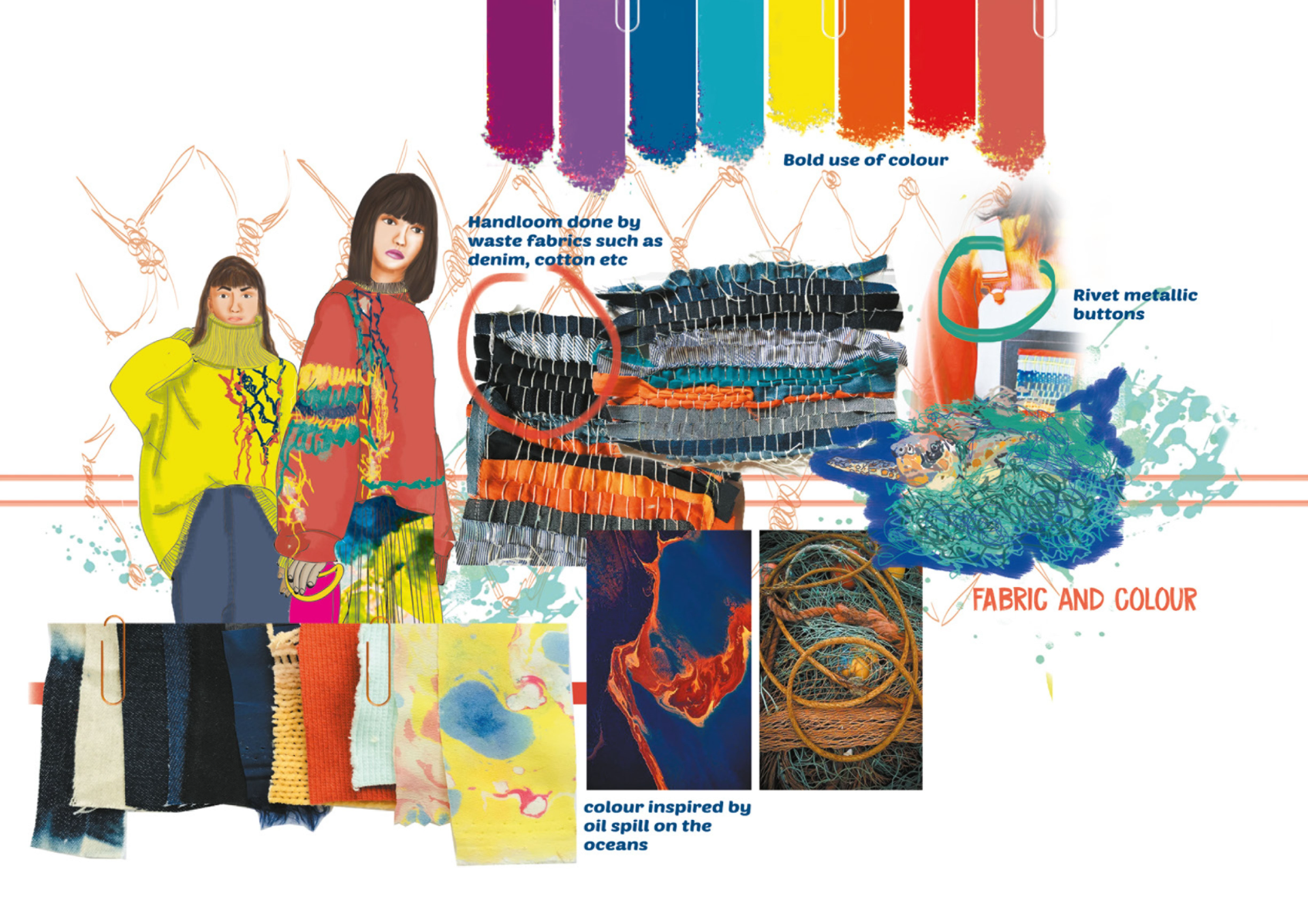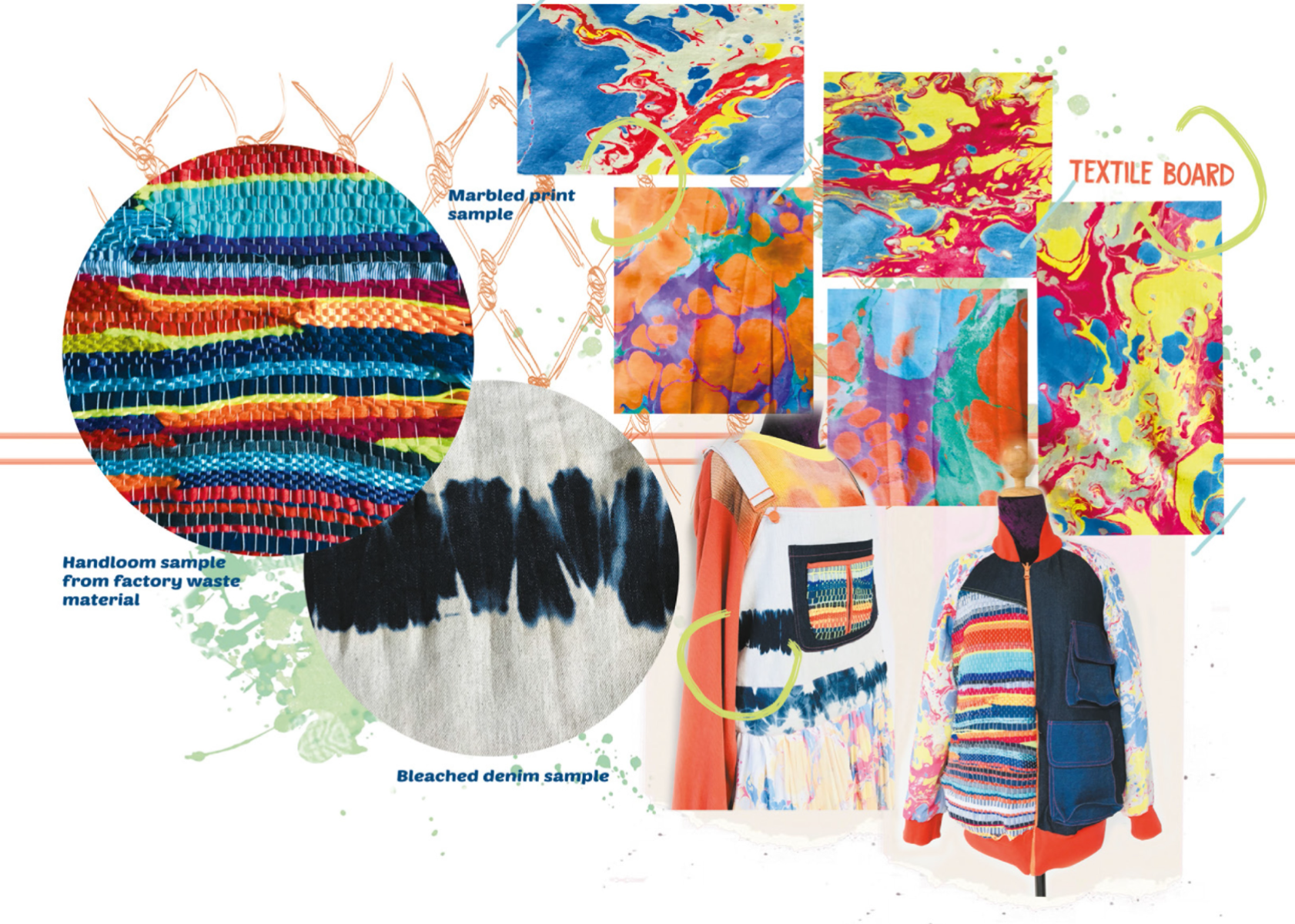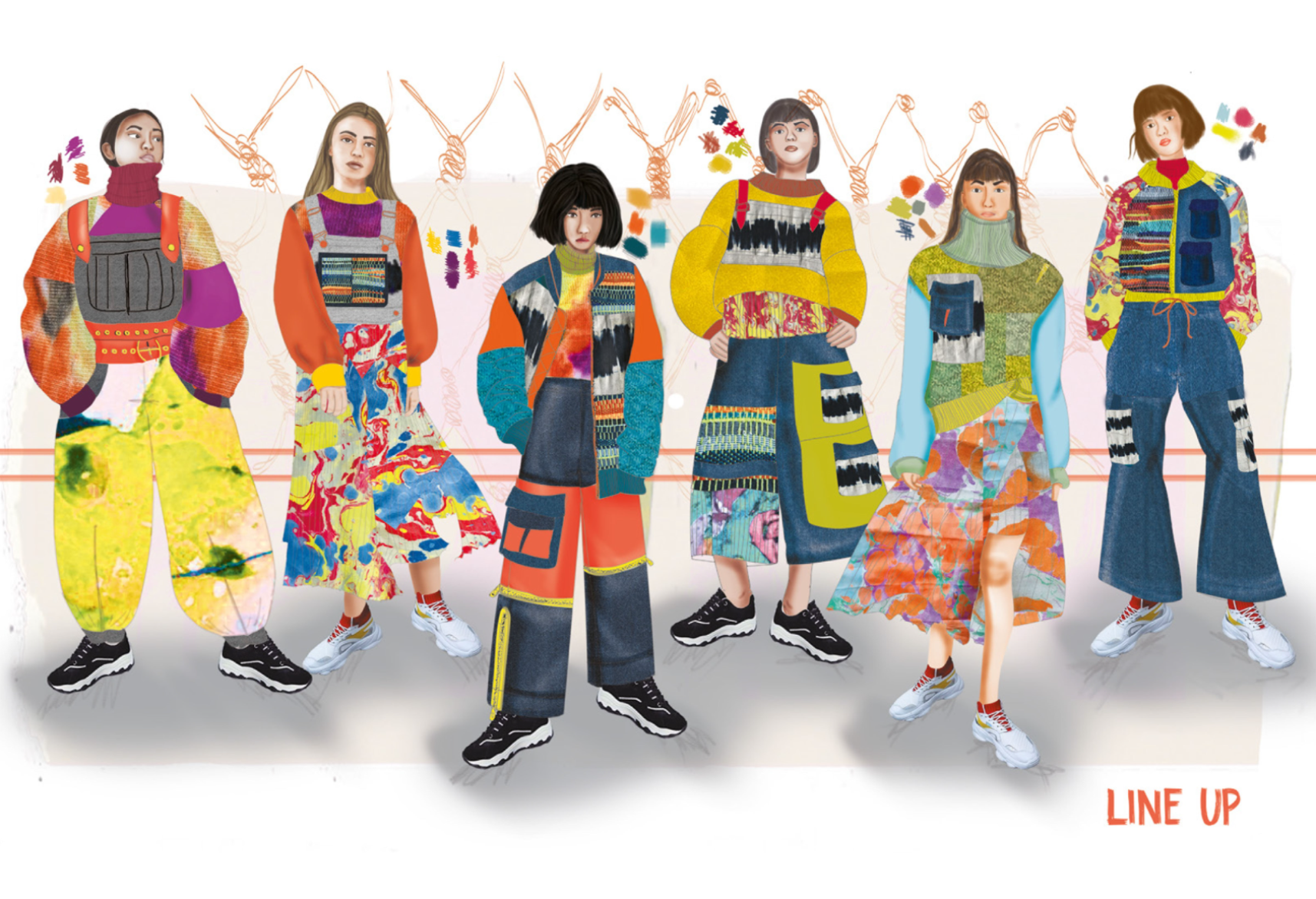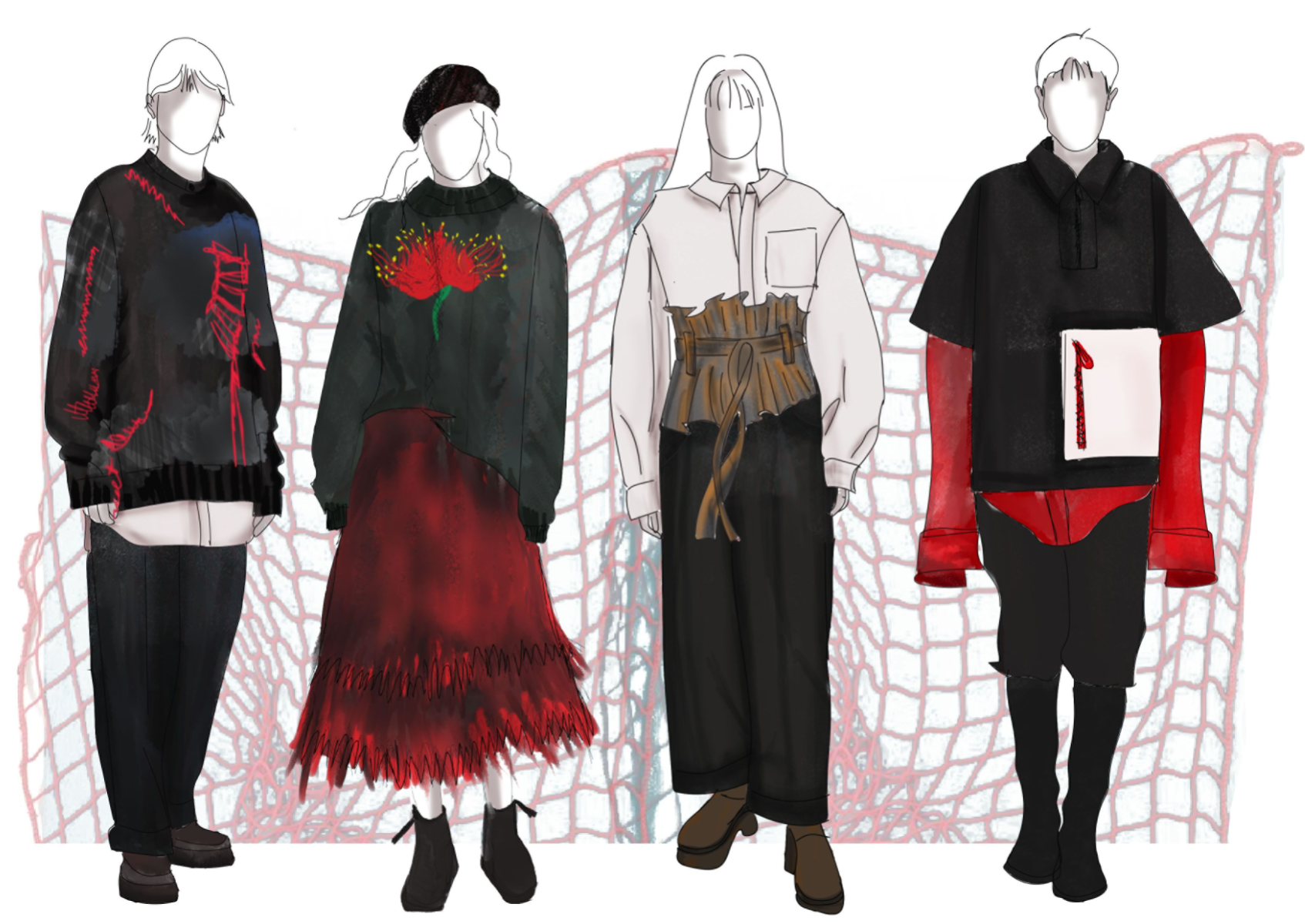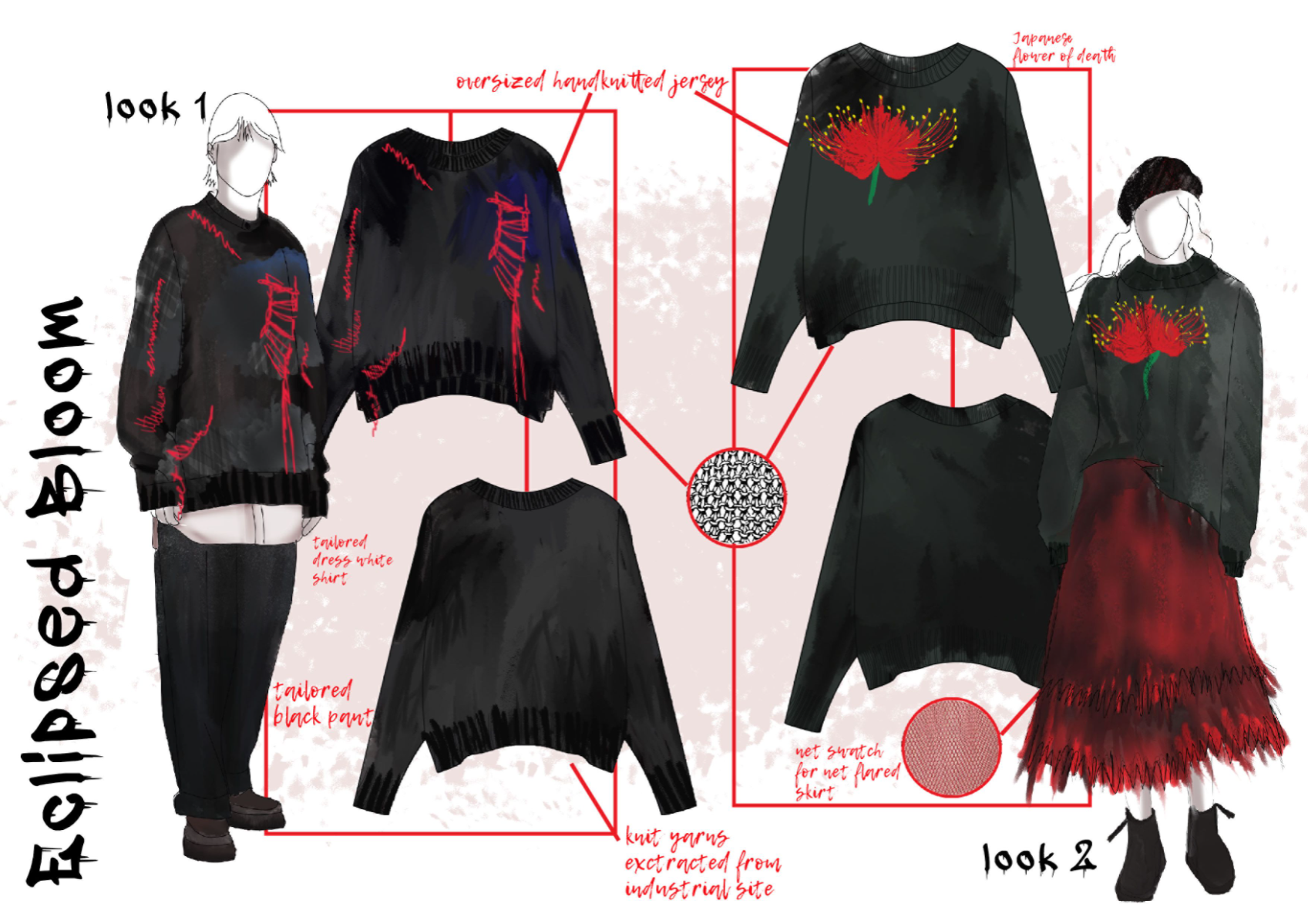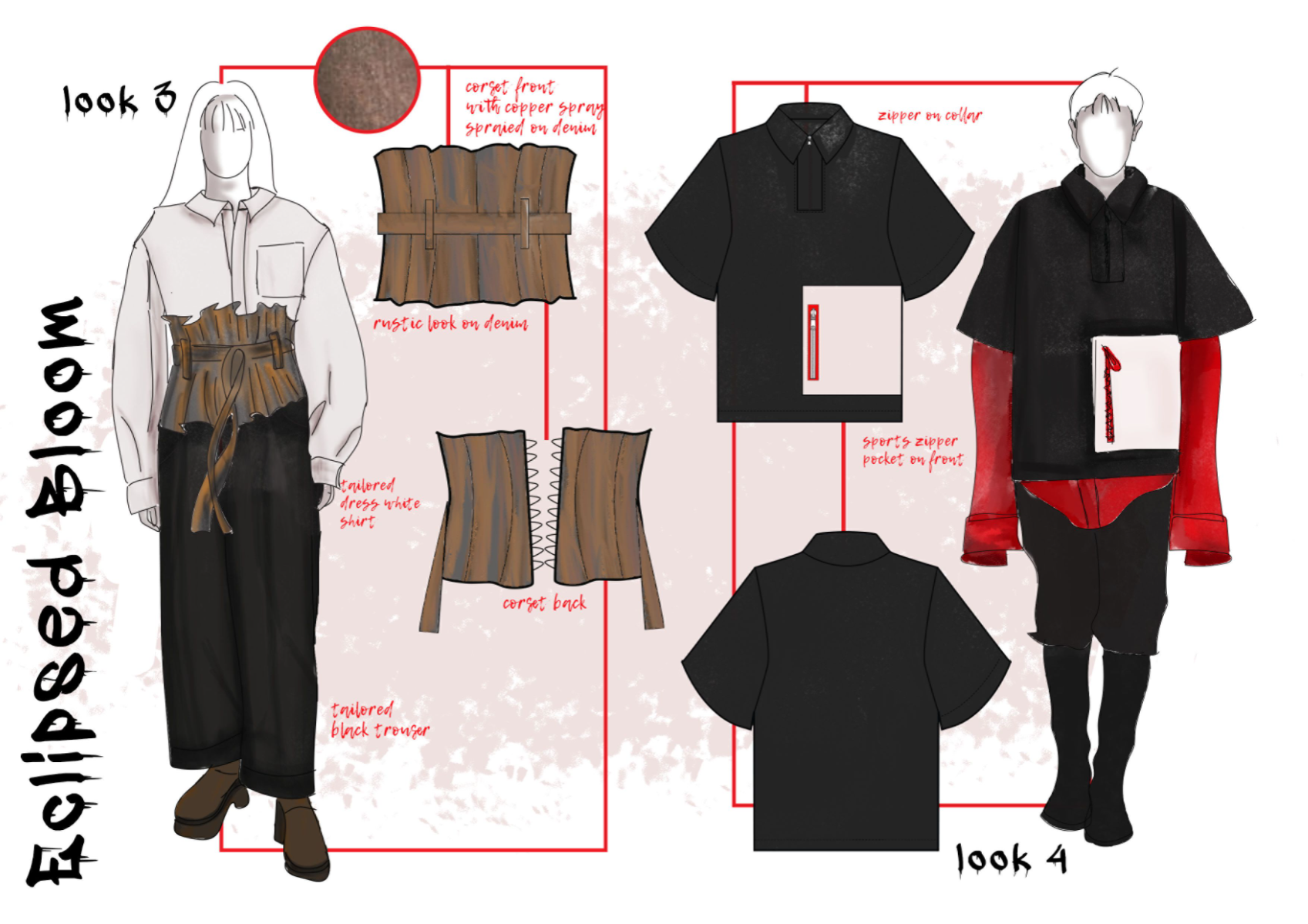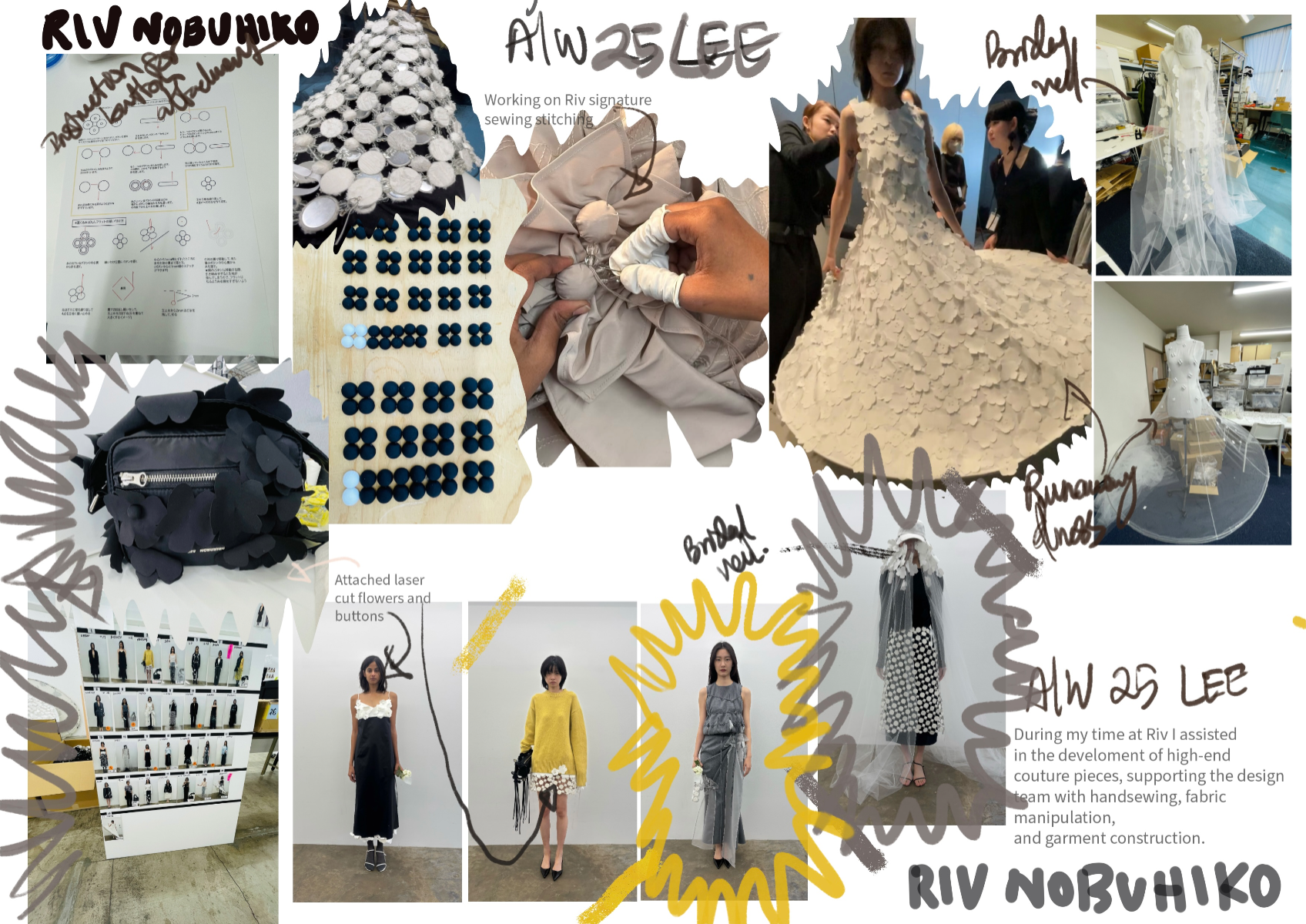Amasha Prasadini
Fashion BA Hons
Northumbria University
Specialisms: Textiles - Print / Sustainable Fashion/Textiles / Textiles for Fashion
Location: Colombo, Sri Lanka

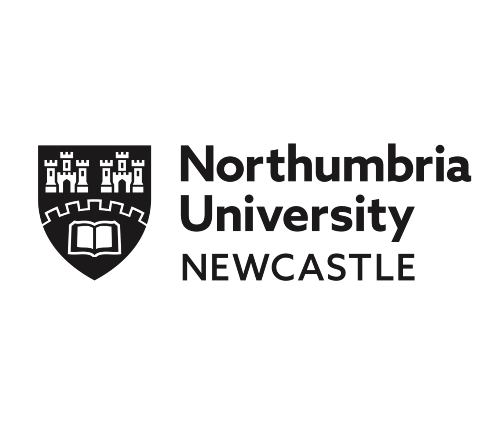
Sustainable women's wear collection 2021
This is a women's street-style collection aimed towards the youth market who are passionate about caring for the environment while being fashionable. The main aim is to bring around awareness about pollution which has a massive impact on the climate. Techniques such as weaving using factory waste materials are used to reflect the concept of re-cycling. The prints are handmade and created through a Turkish Technique called 'Ebru' which is environmental friendly. The colour palette for this collection is inspired by the colours and textures of oil spill on oceans and fishing nets.
This collection is a visual exploration of the emotional tension between depression and dreams, now deepened by the symbolism of the Higanbana, or Japanese death flower. Known for its vibrant red petals and its association with the afterlife, the Higanbana represents both the beauty and inevitability of farewells and endings, resonating with the feelings of loss and isolation often found in depression. In contrast, dreams offer hope and an ethereal escape, much like the fleeting nature of the Higanbana’s bloom. The intricate flower is embroidered onto the garments using rich reds, symbolizing passion and life, but surrounded by darker shades like black and deep grey, representing despair and inner turmoil. The embroidery is placed asymmetrically, with the flower growing upward or cascading down the fabric, suggesting the duality of life and death, despair and dreams. Each Higanbana design is delicate yet bold, much like the emotional experience it represents. The textures created by this embroidery mimic the tangled, unpredictable nature of the mind when caught between these states. Combined with the collection's use of heavy and light fabrics, the Higanbana serves as a reminder of beauty amidst darkness, an emblem of life's fleeting nature, and the possibility of rebirth, even after the heaviest of emotions.
During my time at Riv Nobuhiko, I was immersed in the process of creating one-of-a-kind couture garments in a studio that blends Japanese techniques with avant-garde design. I assisted in fabric preparation, intricate hand-finishing, and supported fittings, gaining a deeper understanding of garment construction and the precision required in made-to-measure fashion. Working closely with the designer and team, I developed a sensitivity to fabric movement, silhouette balance, and the poetic storytelling behind each piece. This experience refined both my technical skills and creative thinking in a couture setting.
